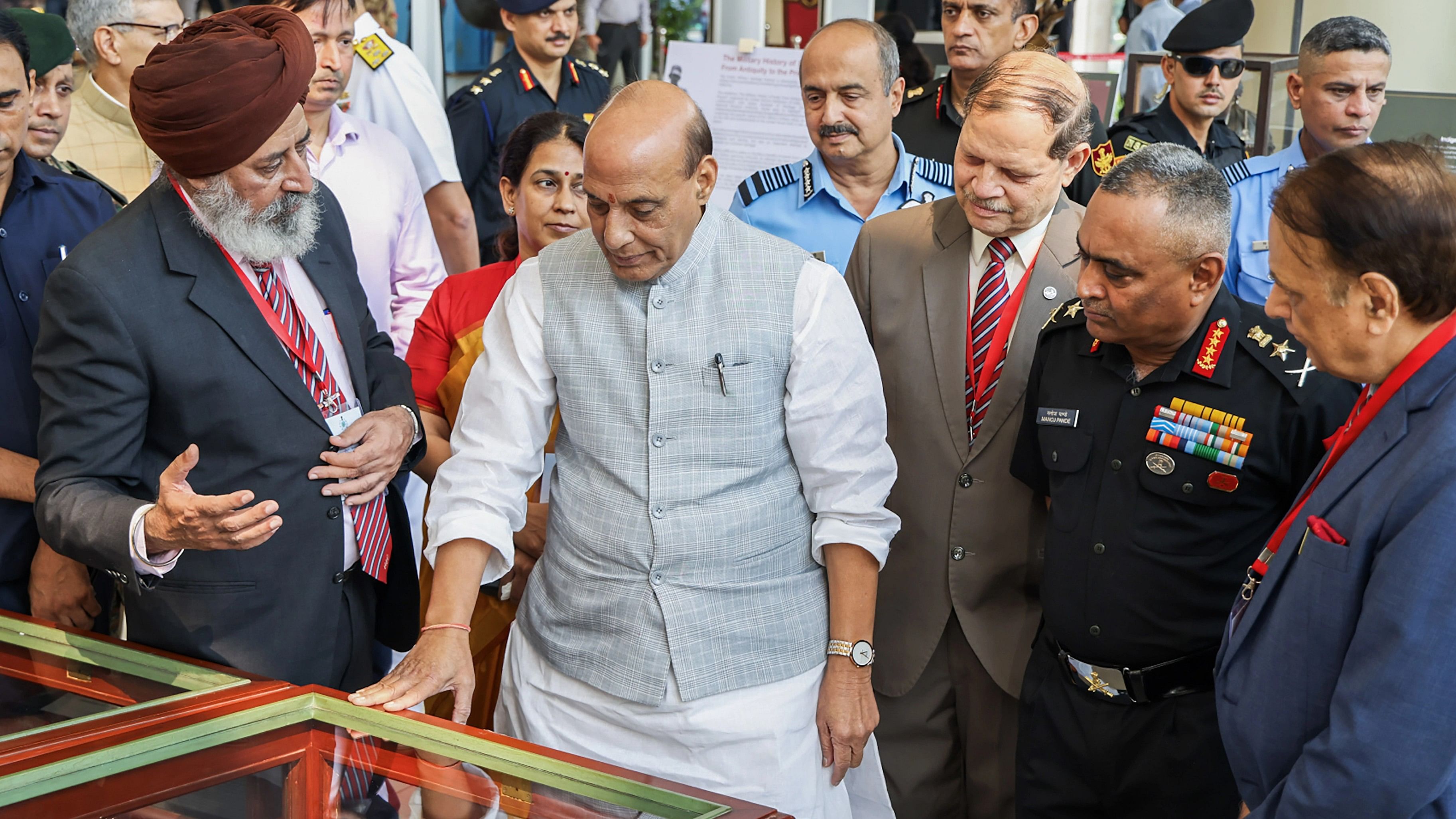
Defence Minister Rajnath Singh with Chief of Army Staff General Manoj Pande during the inauguration of the 1st Indian Military Heritage Festival and launch of project 'Udbhav'.
Credit: PTI Photo
New Delhi: The Indian Army on Saturday launched Project Udbhav under which strategists will dig deep into thousands of years of India’s rich military history to pick up warfare lessons to upskill the world’s second biggest military for future battles.
A big repository of Indian military knowledge ranging from Chanakya's Arthashastra to the wisdom of Thirukkural, a classical Tamil text authored by Thiruvalluvar and prominent military campaigns from the days of Chandragupta Maurya, Ashoka and Chola empires, will be examined by researchers to resurrect strategies that can be dovetailed with contemporary military practices to address modern security challenges.
“We have the example of the Ahom Kingdom, which successfully ruled for 600 years, repeatedly defeating the Mughals.” said Lieutenant General Tarun Kumar Aich, Deputy Chief of Army Staff (Strategy), who is leading the initiative.
“The Naval Battle of Saraighat in 1671, led by Lachit Borphukan, stands as a stellar example of the use of clever diplomatic negotiations to buy time, employ psychological warfare, focus on military intelligence and exploiting the strategic weakness of the Mughals, that was - their navy.”
This project, according to army officials, is not merely a nod to the past but a significant leap towards evolving new, indigenously resonant military concepts, building upon and enhancing existing strategies while intertwining them with the rich, diverse tactical and strategic wisdom encapsulated in our historical documents.
Launched by Defence Minister Rajnath Singh at the Indian military heritage festival, Project Udbhav comes in the wake of the Army Training Command publishing a compendium of 75 strategies picked up from ancient Indian scriptures like Arthashastra, Nitisara by Kamandaki and Mahabharata.
The College of Defence Management also conducted a study to establish linkages between Indian Culture and art of strategic thinking.
“The tenets expounded by our ancient knowledge system were put to practise by Chhatrapati Shivaji and Maharaja Ranjit Singh who defeated numerically superior Mughal and Afghan invaders. While Shivaji’s use of guerrilla tactics is well acknowledged, less highlighted is his foresightedness in construction of a series of Naval Forts along the western seaboard to ward off external threats,” said Lt Gen Aich.
“The project’s objective is to synthesise ancient wisdom with contemporary military practices to address modern security challenges. The Indian Army seeks to integrate age-old wisdom with contemporary military pedagogy,” he added.
While Chanakya's Arthashastra that underscores the importance of strategic alliances and diplomacy, aligning with modern military practices such as international cooperation and soft power projection is studied in some of higher defence organisations like the US War College at Pennsylvania, other Indian ancient texts don’t receive such attention.
But many indigenous concepts, varied approaches to warfare and leadership, and unique strategies propounded by Kautilya and Kamandaka among others offered a fertile ground to cultivate strategies and doctrines that were not only contextually relevant to the Indian military landscape but also provided a foundation to develop new, innovative strategies, said an official.
